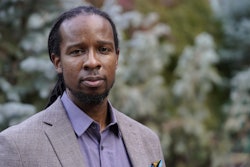More than any other issue of public policy, the national debate over affirmative action has been characterized by confusion and even deliberate distortion. One of the saddest consequences of this has been a challenge to the historic coalition between the Jewish and African-American communities.
Fortunately, there are enough leaders and scholars in both communities who share basic support for affirmative action and have not permitted this challenge to cause irreparable damage to the coalition.
Sharing basic support does not mean total agreement on every aspect of affirmative action. There are, in fact, important differences on the central idea of affirmative action and especially on specific applications of the idea within the Black community, within the Jewish community, within the liberal community and within the conservative community, etc, etc.
Unfortunately, this past year has seen hysterical sloganeering instead of the rational, nuanced debate that is needed. The California legislative initiative and the angry race for the Republican presidential nomination sparked much of this hysteria, with Senator Phil Gramm (R-TX), for example, promising that on the first day of a Gramm administration, all affirmative action would end. President Clinton’s reaction to all this was, in my judgment, right on target: Some problems have developed in affirmative action, but the basic idea is right and it is needed, so mend it where necessary, but don’t end it.
Active Element
As a representative of a major Jewish organization, I can attest that this has been the Jewish view for 30 years now, with very few exceptions. We have been an active element in a civil rights movement that won battle after battle in the courts and in the halls of Congress and the agencies of government. Discrimination was made illegal. Many thousands of Blacks — and then Hispanics and women and handicapped Americans — benefitted from this in employment and education and public accommodations. But progress was too slow and uncertain. De facto discrimination persisted. Positive, affirmative action was required. The result, beyond dispute, is that many more thousands, perhaps millions, got their first breaks in college admissions or in employment for which they were qualified.
But no program as fundamental and widespread as affirmative action could avoid problems. The most fundamental problem was the fear that, despite the laws and the legislative history forbidding it, affirmative action would lead to rigid, exclusionary quotas that would give automatic preference, without regard to merit, based on race or gender.
Jews are particularly sensitive to quotas because of the ugly history of quotas that kept Jews out of employment or education. This Jewish rejection of rigid quotas has not, however, kept them from being ardent supporters of goals and timetables — a form of affirmative action that prevails throughout both industry and public employment. Critics, either out of ignorance or deliberate distortion, say there is no difference between goals and quotas, but there surely is. A goal is a carefully determined objective that is used to encourage and to measure progress in eliminating discrimination.
Some goals programs do become defacto quotas. In Clinton’s words, these should be “mended,” not ended. And when a white college applicant or job-seeker claims “reverse discrimination,” he or she should feet confident that the claim will be given a fair hearing.
Underlying Justification
The underlying justification for affirmative action remains as reasonable as ever. We all seek a “colorblind” society, but we are not there yet. Despite the progress we have seen in the last 10 or 20 years, the disparity in employment and education between white America and Black America is simply unacceptable. Affirmative action on college campuses is intertwined with educational goals of diversity. Each college situation produces special considerations that must be accommodated; conflicts are difficult to avoid. But no blanket ban on the use of affirmative action should be supported.
It will surely be a happy day for America when we can say that affirmative action is no longer needed. But any honest observer of today’s America must say yes to the following question: Is it not true that for every white male who is eliminated the moment he walks into the office of an employment interviewer because he is a white male, there are still, in our nation, scores, if not hundreds, of Blacks and women who face rejection only because of their racial or gender status?
As long as this situation continues, we must not abandon our efforts to make a reality of our commitment to equality of opportunity. But we must continue — and substantially expand — our efforts to make every American as prepared as possible to qualify for the employment and educational opportunities that may be available. It is not irrelevant or unfair to point out that the loudest critics of affirmative action are also the leading opponents of adequate funding for education training, health and related programs.
Together, these programs constitute the fuller “affirmative action” that is required to assure the equality of opportunity for all Americans. It is here, too, that the Jewish community is actively supportive, as is the African-American community. Despite ignorant talk about “the collapse of the Black-Jewish coalition,” I know from decades of direct involvement that both communities are in substantial concurrence on affirmative action as such — and on the broader issues of social policy.
HYMAN BOOKBINDER Washington Representative Emeritus, American Jewish Committee
COPYRIGHT 1996 Cox, Matthews & Associates
© Copyright 2005 by DiverseEducation.com


















